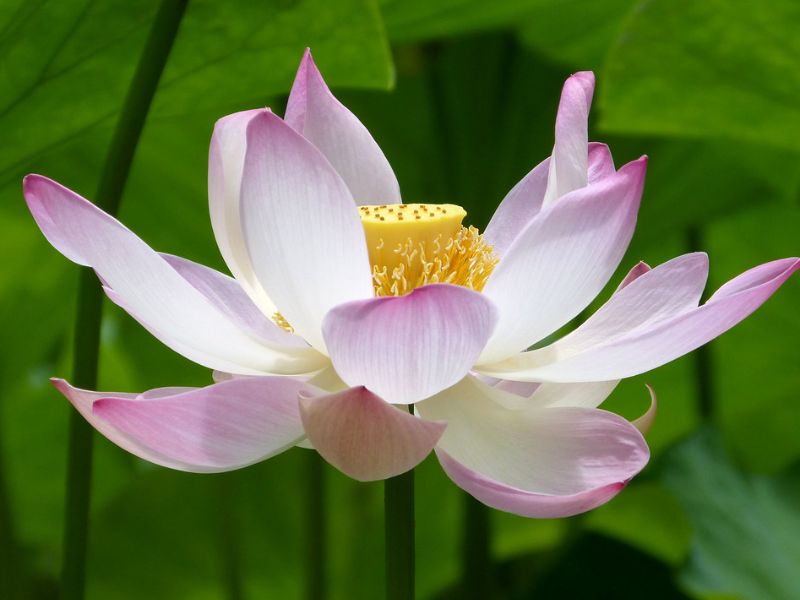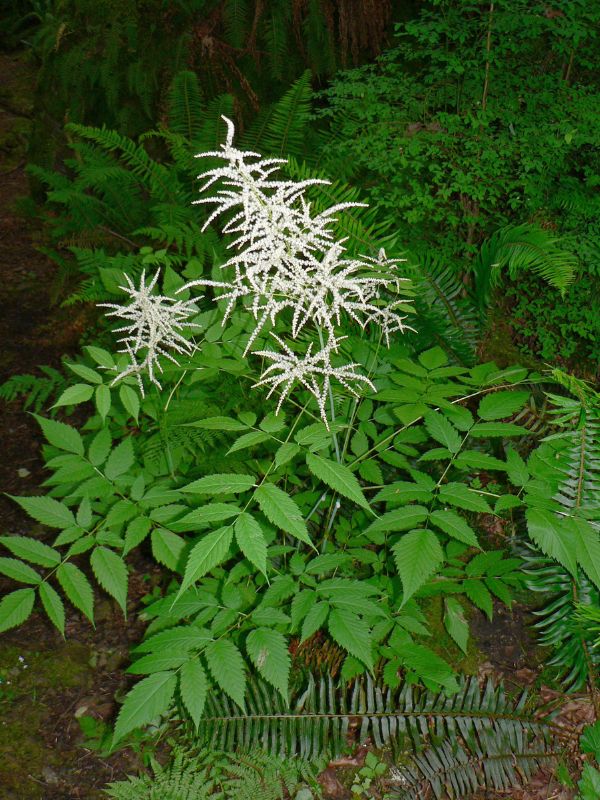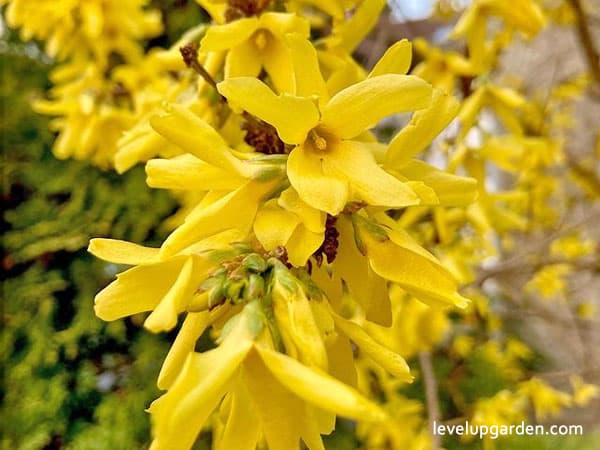The Kwanzan Cherry Tree (Prunus ‘Kwanzan’) is widely known as the highest of all flowering trees. In spring, beautiful double-petaled flowers of deep pink bloom from the branches, creating a spectacular appearance. The leaves turn from bronze to dark green. Its branches spread outward and upward, reaching 36 feet tall and nearly as wide across.
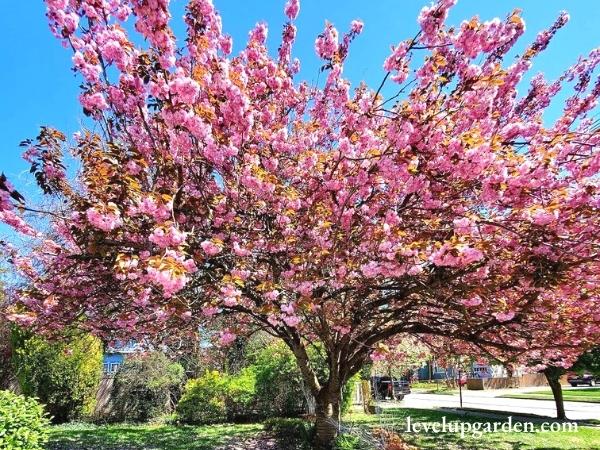
It is a fast-growing, hardy, and tolerant of a variety of soils, Kwanzan Cherry is undoubtedly the queen of flowering trees. It is definitely the flowering tree of choice, especially in cooler regions. Widely admired at the famous Washington Cherry Blossom Festival, it is the best of all cherry trees.
The Japanese cherry tree is a small deciduous tree of the rose family, growing up to 36 feet tall, with rounded, spreading, stiff, upward reaching branches. Young trees are vase-like in shape, but mature trees have a rounded canopy and are more spread out. It prefers sunny, sandy to clay-drained loams, but can tolerate light shade. It is also susceptible to viral and fungal diseases and susceptible to borers and beetles.
It produces many double pink flowers in spring and is considered one of the most spectacular cherries in Japan. Its fruits ripen in summer. The foliage provides shade, autumn foliage is usually orange-bronze. The grafted trees are only 6.5 feet tall, but can reach full height if grown on their own roots. This plant is called “Sato Zakura” in Japan, which means “domestic cherry tree”.
If you have ever seen the famous cherry trees in Washington, D.C., you are probably familiar with the kanzakura (Prunus serrulata). This ornamental cherry tree produces a profusion of dark pink double flowers, which are spectacular when in bloom. After blooming in the spring, it makes an attractive anchor for informal gardens, and in the fall it offers beautiful yellow to bronze foliage. Since it does not bear fruit, it is ideal for planting alongside sidewalks and driveways.
I. Plant Profile – An Overview of the Kwanzan Cherry tree
| Common Name | Japanese Flowering Cherry, Kwanzan Cherry, Prunus ‘Kwanzan’, Prunus ‘sekiyama’, Prunus ‘Sekizan’ |
| Botanical Name | Prunus ‘Kwanzan’, Prunus serrulata cultivars |
| Plant Type | Trees |
| Plant Family | Prunus – Flowering Trees |
| Exposure | Full Sun, Partial Sun |
| Water Needs | Average |
| Maintenance | Low |
| Soil Type | Chalk, Clay, Loam, Sand |
| Soil pH | Acid, Alkaline, Neutral |
| Soil Drainage | Moist but Well-Drained, Well-Drained |
| Tolerance | Clay Soil, Drought |
| Mature Height | 30-40 ft. |
| Mature Width | 30-40 ft. |
| Growth Rate | Moderate |
| Growing Zones | 5-8 |
II. Appearance
This is a beautiful tree that everyone will admire. It is usually grown as a specimen tree, but imagine your driveway filled with these beautiful trees in the spring. Despite being such a wonderful tree, the Kwanzan cherry grows quickly. Under the right conditions, they can grow two feet a year into beautiful mature trees.
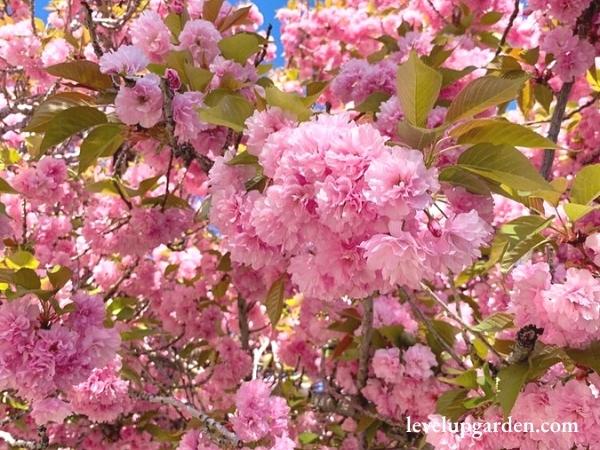
The tree is vase-shaped, 25 to 30 feet tall and many meters wide. The dark pink flowers have as many as 30 petals and are as large as 2.5 inches across. Each spring, two to five flowers hang in bunches from bare branches, glowing pink. The beautiful bark is a smooth chestnut color with a light horizontal band of color that makes a beautiful display with the bare twigs in winter.
The leaves are oval and about 15 cm long, they are a gorgeous bronze color at the beginning of bloom and turn dark green throughout the summer. The leaves turn a beautiful yellow-orange color in the fall and fall off. This tree does not bear fruit, so it does not stain the roadway like crab apples.
In spring, the tree produces many flowers in front of the leaves. They are dark pink, double flowers with 20-30 petals, 2.5 inches across. The florets extend up to 1.5 inches long. Inflorescences are dense, in combs of 3 to 5 flowers.
Its leaves are alternate, simple ovate to ovate-lanceolate, with long acuminate, cuneate or rounded serrations and narrow stem glands, reddish brown or bronze when expanded and reddish green when mature. The leaves have a 1 cm long petiole with 2 to 4 reddish brown, shiny, globular glands near the tip of the petiole. Young leaves are bronze, then turn dark green. In the fall, the 5-inch-long leaves turn yellow to orange.
III. Growing and Care Conditions
It grows in full sun, and in well-drained loamy soil with a high humus content. It is optimum to plant in early fall, usually from container-grown seedlings. The soil should be evenly moistened, as the tree is not drought tolerant. Some varieties grow to medium size, but compact varieties can be grown in containers or as bonsai.
It is a finicky plant that is prone to pests and diseases. But don’t be surprised if it dies back after 15 to 20 years. Although it rarely has a year free of insect and fungal diseases, its spectacular spring blooms make it worth it for many gardeners.
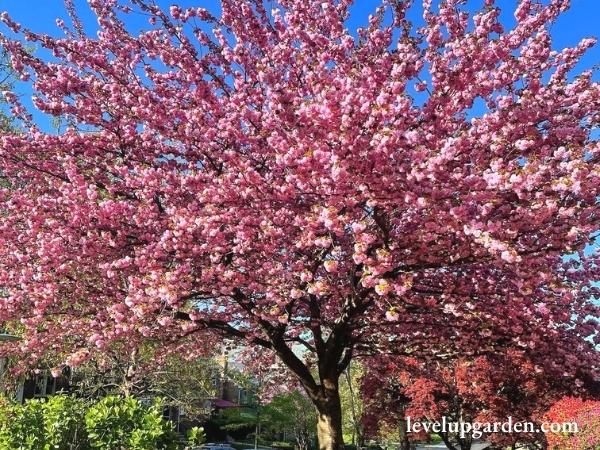
Planting
Kwanzan grows best in moist, well-drained soil and full sun (at least 4 hours per day).To plant, first, dig a hole the same depth and twice as wide as the rootball. Then, carefully spread the roots in the hole, leaving a small pile of soil in the center of the hole for the rootball. Next, backfill the hole, place the tree, and water the surrounding area. Do not cover the crown of the tree with soil, only the base of the tree. Finally, spread mulch over the surrounding soil to retain moisture.
Light
Kwanzan can be grown outdoors with USDA hardiness zones 5-9. Kwanzan Cherry Tree can thrive in full sunlight and unfiltered sunlight. Plant in a location that receives at least 6 hours of sunlight per day.
Watering
Kwanzan prefers adequate moisture, at least 1 inch per week. Place mulch on top of the soil to maintain moisture and insulation, especially during the winter months. Once planted, it can tolerate short periods of drought.
Fertilizer
Fertilizer is not required for the first two years. After that, apply 1/10 pound of actual nitrogen for each year of tree age, up to a maximum of 1 pound per year. Apply only once in the spring or divide into two to four applications during the spring and summer.
Soil Requirements
Kwanzan cherries prefer rich soils with little clay or sand. It likes moisture, but does not like a site that is constantly wet. Once planted, it is quite tolerant of drought.
Temperature
Kwanzan Cherry is known to tolerate winter temperatures as low as -10 degrees Fahrenheit, and is cold tolerant north of Zone 5. Zones 5b through 8a are ideal climates. The south side of the garden would be the best location for this tree, as it may not get the 45 degree winter dormancy it needs. However, prolonged cool, wet summers can be problematic for cherry trees because they harbor a number of fungi that can cause serious disease for the tree.
Pruning
Little pruning is required except to remove crowded branches. If pruning is needed to adjust size, do so during the dry summer months. Look for any new shoots emerging from the main trunk that have a different leaf color or shape. These should be cut off immediately.
Pests and Diseases
The common pests, like aphids, several species of caterpillars, and the caterpillar beetle, or caecilian beetle, may be present. The caterpillars will produce a mottled appearance on the trunk and leaves. The leaves may also discolor or show signs that something is feeding on the leaves. Minor infestations may be treated by picking off the insects or washing the leaves with a hose. Large infestations may require spraying with insecticides.
Diseases include cankers, blight, and black spot. Although, too much moisture in the soil or prolonged exposure to puddles can cause root rot. Fungicides are effective against some diseases, such as leaf spot and brown rot.
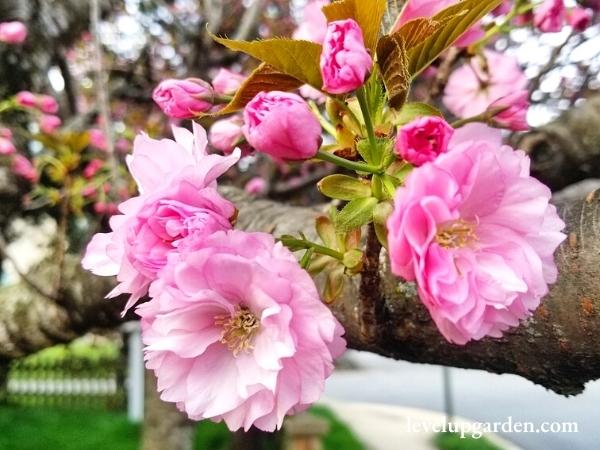
Pollination
Kwanzan does not produce fruit, so there is no need to provide multiple trees for pollination. It is not necessary to have multiple trees for pollination. To take cuttings, prune branches with two to four leaf nodes, soak them in rooting hormone for two days, and then plant them in a mixture of peat moss and perlite. Keep them moist in a sunny location and they may root.
IV. Uses
In early spring, fragrant rose flowers bloom along the branches, and cherry-colored flower buds in front of the leaves are a distinctive feature of this cherry tree. Dark green, deciduous, copper-colored leaves appear in spring. In fall, the serrated, pointed leaves turn orange. The dark red smooth bark adds an interesting dimension to the landscape.
As a specimen tree, as a street tree, and for group planting in parks and public areas. Plant in front yards to create islands in flower beds. Place boulders beside the cherry tree and use some soft touch holly shrubs on the sides. Alternatively, plant just the cherry tree in the front yard. This tree can be used almost anywhere around the house.
Try planting it where you can see it from a window, that way you can enjoy the cherry blossoms from indoors. The Kwanzan Cherry also pairs well with blue junipers and yellow-gold shrubs. The blues and yellows will make this tree pop.
V. Why should you buy this plant
If you want to wow your neighbors, try planting this beautiful white and pink tree with some dark evergreens. It can also serve as a shade tree if planted in a small space like a patio.
This tree will make you look forward to spring. Look out your windows to see the beautiful spring colors. It is a wonderful flowering tree that adds color and value to your home. Kanzakura cherry trees begin blooming in April in most areas. The pink blossoms that fill the branches of the tree signal that spring has arrived.
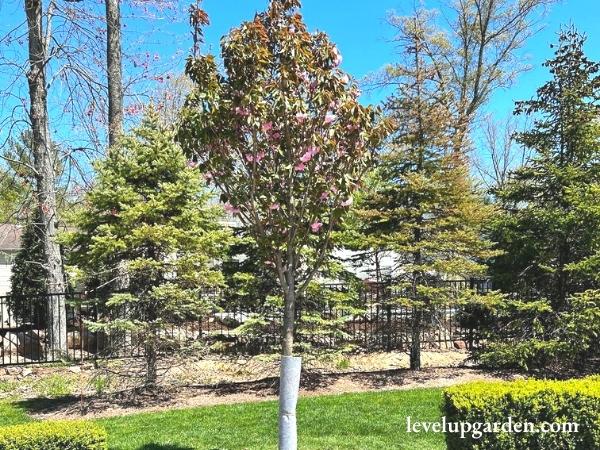
This cherry tree is one of the most hardy cherry trees available. It is delivered in a container with soil. There is no need to worry about bare root. It blooms in large clusters of 3 to 5 flowers. These clusters are the thickest of any pink tree and resemble carnations in color and volume.
The hardiest of the cherry tree family, the Kwanzan will enliven spring each year and usher in the new season with unparalleled color. In fact, it is also the most spectacular of all cherry trees. Both petals and petals are twice as large as those of other cherry trees, in other words, double pink.
It is also one of the easiest flowering trees to grow. It grows in any soil and climate, so you don’t have to spend a lot of time spraying, fertilizing, and pruning. When it comes to Kwanzan, there is no guesswork involved in growing it.
The Kwanzan cherry may be the most showy of all cherries. As other cherry trees begin to fade, the Kwanzan blossoms take over. Each spring, the tree is filled with colorful blossoms that are sure to delight the eyes of all who see it.
As the flowers begin to fall, bronze leaves take their place, turning a glossy green in the summer. In the fall, the leaves turn a bright yellow-orange, and when the cold of winter arrives, the thin, glossy bark of the kwanzakura becomes a showstopper.
Cherry trees in the United States began with the thousands of cherry trees sent to the nation’s capital from Japan in the early 1900s. We remember this gift every year at the National Cherry Blossom Festival, where the natural beauty of these trees can be enjoyed for weeks.
Now you can enjoy this beauty in your garden all year round. Light mountain cherry trees do best when planted in full sun. It can be planted regardless of soil type or climate, and it grows quickly, reaching 30 feet in height and width.
Plant one as a specimen tree or group several together to line a drive or patio. Kwanzan cherries are a great addition to any garden.
VI. FAQs
When should you plant a Kwanzan cherry tree?
The best time for planting is spring or fall – wait until the last frost has passed in spring and before the first frost hits in fall.
Do Kwanzan cherry trees lose their leaves?
The Kwanzan cherry tree loses its chlorophyll as the autumn days get shorter. This pigment gives the trees their characteristic green color from spring to summer. As chlorophyll decreases, the leaves turn yellow and eventually fall to the ground.
How far apart should you plant Kwanzan cherry trees?
When planting several trees, space them 12 to 15 feet apart from the center of the trunk. The roots of crowned mountain cherries are less likely to compete with grass, so plant them in a raised mound bed, especially if poor drainage is a concern. The mound should be elevated 12 to 18 inches above the surrounding soil.
How often do Kwanzan cherry trees bloom?
It varies from year to year, but has been as short as 4 days and as long as a month later. If you miss the end of the blooming of Someiyoshino, Kanzan-zakura will be very beautiful. The pink blossoms are layered and look like little roses.
